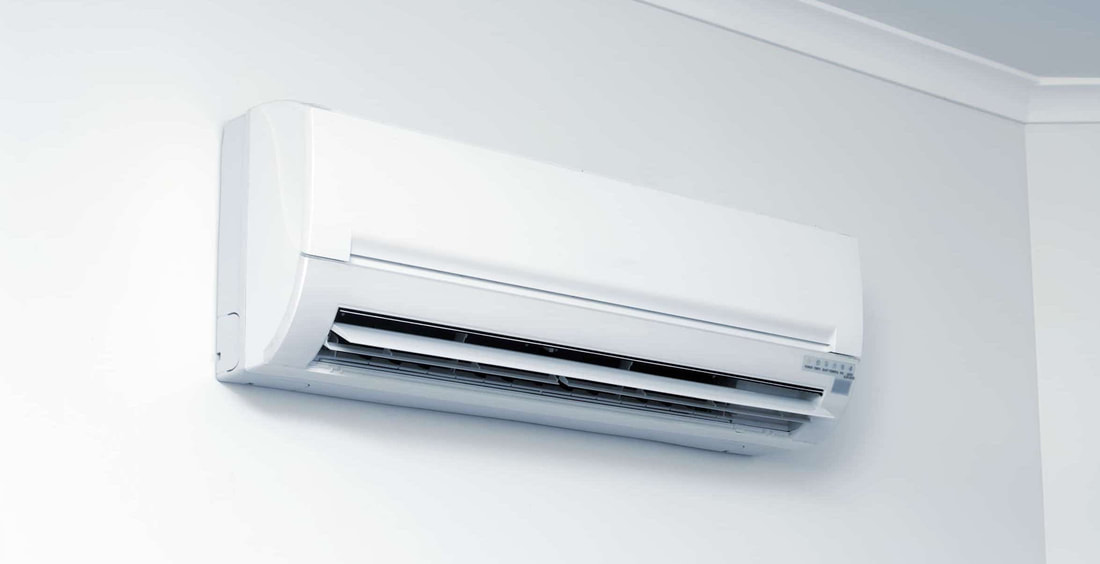How to choose an air con for homeChoose the air con typeIn general, there are two types of air conditioner popular in the UK, portable air cons and split systems. A portable unit is the cheapest option. It doesn’t need any installation. So, you may relocate it as often as you need. However, every time you change the unit location, you need to arrange the way how hot air will be vented out of your room. Typically, for this purpose, one connects a hose to the cooling appliance while leaving its other end outdoors. One of the problems with portable air conditioners is you need to arrange all this the way it prevents hot outdoor air from slipping into your home through a gap you leave for the hose. Another drawback here is the rather poor features of such appliances. And, at last, portable devices are not very energy efficient. In other words, while coming to your home at a lower cost, it will take more money out of your pocket while working there. In contrast, the initial costs of a split system are much higher. To clarify, you have to pay for the appliance itself plus for its installation. For example, the average prices for air conditioning installation in London are around £1000. However, these higher initial costs may pay off within a year as split systems are more energy-efficient. Besides, a split system typically provides a lot of modes and extra features. For example, you can use it as a dehumidifier and purifier. Choose the right cooling capacityAs the main purpose of why you buy an aircon is to enjoy lower temperatures, unit cooling capacity is the king. The cooling capacity is measured in BTUs (British Thermal Units), which means how much heat an appliance can vent out of the room per hour. There are a lot of factors that determine your BTU needs. Here is the list of the most important ones:
To be more specific, you can calculate exact cooling capacity by summing up the following bullet points:
If you find it difficult to get the exact energy consumption of all the appliances you have got in the room you want to cool, take, on average, additional 500 BTUs per each device. Moreover, take into account the specifics of your room sun-facing. To clarify, add 10 percent to the total BTUs if it is sunny or deduct 10 percent if it is shaded during most of the day. Instead of conclusionYes, you may reach your desired versatility and cooling effect on the two steps we mentioned before. But try to think deeper in the case (and, thus, think ahead). For example, modes you need. And, of course, consider the energy efficiency factor. To clarify, there are a lot of inverter split systems on the market that are ultra-energy efficient. While their prices can be slightly higher than average, they are more eco- and budget-friendly when in use.
2 Comments
Leave a Reply. |
AuthorLE Company team |
- Home
-
Services
-
Repair
>
- Emergency Restaurant Equipment Repair
- Commercial Catering Equipment Repair and Maintenance >
- Fridge and Freezer >
- Gas Boiler Repair
- Ice Maker Repair
- Ice Cream Machine Repair
- Grill and Barbecue >
- Heat Pump Repair
- Central Heating Boiler Service
- Dishwasher repair >
- Oven Repairs >
- Coffee Machine Repairs
- Air Conditioning Repair
- Heating Repairs
- Commercial Gas Boiler Service
- Cold Room Repairs
- Plumbing Repairs
- Electricity Repairs
- Charge Point Services >
- Restaurant Refurbishment
- Medical Equipment Repair >
- Electric Boiler Repair
- Dental Equipment Repair
-
Installation
>
- Fridge and Freezer >
- Dishwasher Installation
- Oven Installation
- Coffee Machine Installation
- Air Conditioner Installation
- Heating Installation
- Cold Room Installation
- Plumbing Installation
- Electricity Installation
- Sub Zero Installation
- Gas Combi Boiler Installation
- Heat Pump Installation
- Commercial Boiler Installation
- EV Charger Installation >
- Gas Safe
- Energy Performance Contract
- Bespoke Designer Kitchens
- Medical Equipment Installation >
- Electric Boiler Installation
- Rental >
- Sectors >
- Hybrid Vehicle >
- Electric Vehicle >
-
Repair
>
- Products
-
Brands
- About
- Payment
- Contact us
|
Email
|
Office
|
Address
|
|
Specialist
|
12 Melcombe Place
Marylebone Station London, NW1 6JJ |
© COPYRIGHT 2015. ALL RIGHTS RESERVED.
- Home
-
Services
-
Repair
>
- Emergency Restaurant Equipment Repair
- Commercial Catering Equipment Repair and Maintenance >
- Fridge and Freezer >
- Gas Boiler Repair
- Ice Maker Repair
- Ice Cream Machine Repair
- Grill and Barbecue >
- Heat Pump Repair
- Central Heating Boiler Service
- Dishwasher repair >
- Oven Repairs >
- Coffee Machine Repairs
- Air Conditioning Repair
- Heating Repairs
- Commercial Gas Boiler Service
- Cold Room Repairs
- Plumbing Repairs
- Electricity Repairs
- Charge Point Services >
- Restaurant Refurbishment
- Medical Equipment Repair >
- Electric Boiler Repair
- Dental Equipment Repair
-
Installation
>
- Fridge and Freezer >
- Dishwasher Installation
- Oven Installation
- Coffee Machine Installation
- Air Conditioner Installation
- Heating Installation
- Cold Room Installation
- Plumbing Installation
- Electricity Installation
- Sub Zero Installation
- Gas Combi Boiler Installation
- Heat Pump Installation
- Commercial Boiler Installation
- EV Charger Installation >
- Gas Safe
- Energy Performance Contract
- Bespoke Designer Kitchens
- Medical Equipment Installation >
- Electric Boiler Installation
- Rental >
- Sectors >
- Hybrid Vehicle >
- Electric Vehicle >
-
Repair
>
- Products
-
Brands
- About
- Payment
- Contact us


 RSS Feed
RSS Feed
